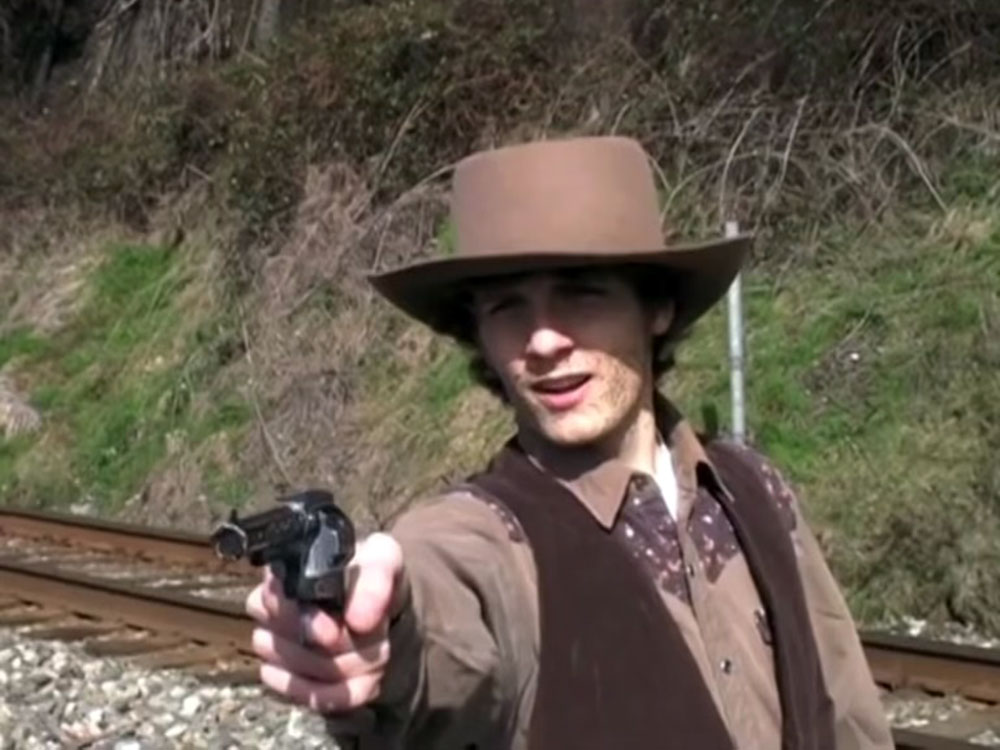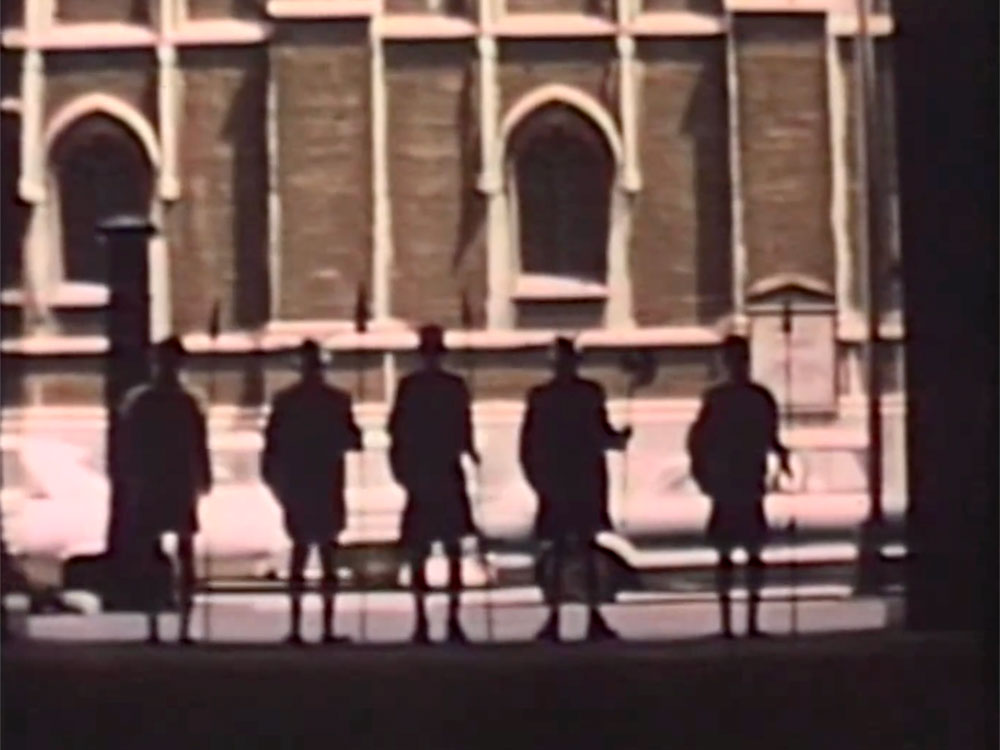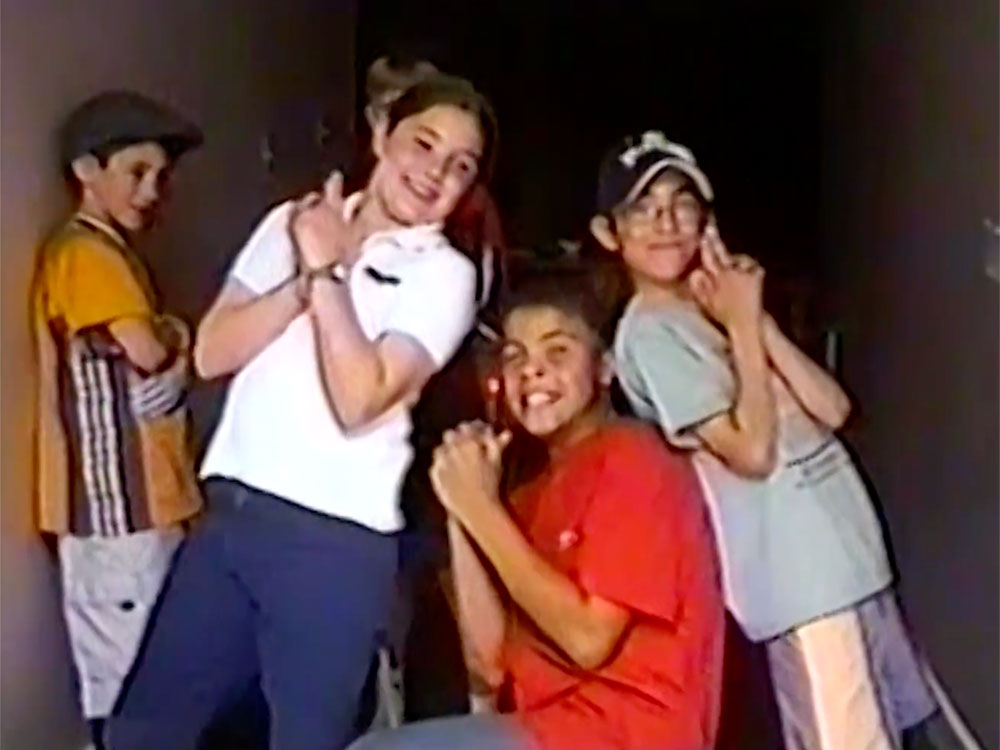In the summer of 2002, the Schindel family gathered at Highland Lake Inn & Resort near Asheville, North Carolina for a reunion. A cadre of the youngest among us–primarily myself and my cousin Ben, alongside my brother, his two brothers, and some other assorted cousins–came in with a plan. With our brains addled by Austin Powers and Monty Python, Ben and I (11 years old at the time) had scripted a parody of the 1964 James Bond film Goldfinger. It was titled Goldtoe (pictured at top). Filmed on a video camera, edited by my dad, and premiered on the last night of the reunion, the film was subsequently forgotten for more than 20 years. That is, until I submitted it to the second Childhood Delusions Film Festival, which took place on January 27.
I imagine there are similarly cute stories behind all the movies that played at CDFF. That night, Midwood’s Kent Theater was populated with adults participating in a cinematic spin on Mortified, showcasing work they had made as kids or teens. Why should juvenile film be confined to rotting VHS tapes, forgotten CDs, or disused YouTube channels? Filmmaker Curtis Whitear, who organized the festival along with Joe Soonthornsawad, was inspired to start it by digging up his own youthful efforts. Whitear’s 2005 high school film class project Chujo Si Spek closed out the festival. It’s a black-and-white post-apocalyptic tale spoken in a subtitled future conlang, perfectly emblematic of the kind of ambition that tyro artists bring to their work, completely heedless of their technical or experiential limitations.

Young people tend to create less than they imitate the familiar. That my family made a spoof movie rather than attempt an original spy-actioner is illustrative. Many CDFF movies are uncanny palimpsests of existing genre tropes and filmmaking techniques. Steve Macfarlane, the writer and director behind the 2004 vengeance western Vendetta, described watching it as catching his teenage self right between when he saw the two parts of Kill Bill. (Vendetta, by the way, is a delight, featuring a cowboy with drawn-on stubble mixing with his acne, riding a stick-horse toy to duel goons on railroad tracks; you wonder whether they were allowed to be playing around on an unused train car, or if there was any danger of a real locomotive coming around the bend during the shoot.) The greatest example of this, though, was a compilation of sex scenes from works by Michael Patten, which featured children replicating, with discomfiting accuracy, the motions of love scenes from films while very clearly having no idea how sex actually works.
Sometimes, though, novice imitation yields actual artistry, if only by accident. I was startled to see a competently executed whip-pan in Goldtoe, even if it was used to reveal a villain whose intended intimidation factor is diluted by the adorable six-year-old boy portraying him. Anni Reffsin’s angsty music video for Muse’s “Map of Your Head” contains a well-done focus rack. (She used the film as part of her application for fashion school and got in.) And then there’s Viking Film, which stood out both for coming from 1966 and for being a real-ass movie constructed with clear thought behind the camera despite the nonexistent budget. It also provides a fascinating glimpse of New York at the time. The film’s roving band of vikings, traversing the city in a quasi-obverse of the journey seen 13 years later in The Warriors (1979), go from Coney Island to the subway and end up at Central Park, where they assault Belvedere Castle. Co-director Marc Weiss would go on to become a respected documentarian and help found the venerable PBS series POV.

Because these works are a subset of home movies, they are naturally also historically valuable time capsules. News 19 with Anne Madden (1999) is a mock broadcast about the crash of JFK Jr.’s plane that unintentionally makes a vivid statement about how innocence protects children from tragedy; the kids can’t stop giggling when talking about the man’s death. Of course, a few years later, the state and mass media’s powers to traumatize would be flexed over a much larger aeronautical event.
The older I get, the more reminiscence is sharpened by regret, my memory increasingly populated by people no longer around–my grandparents, my great uncles and aunts. There are photos and videos of them from that summer reunion, but I wish now that we kids had some presence of mind to include the earlier generations in our production. But of course, if anyone had admonished us to do so back then, I doubt we would have been receptive. Why would we ever get the grownups too involved? A lack of such foresight is a hallmark of childhood. What fun would it be for the future to weigh so heavily on you? That’s no mindset for a deluded young filmmaker to work with.



